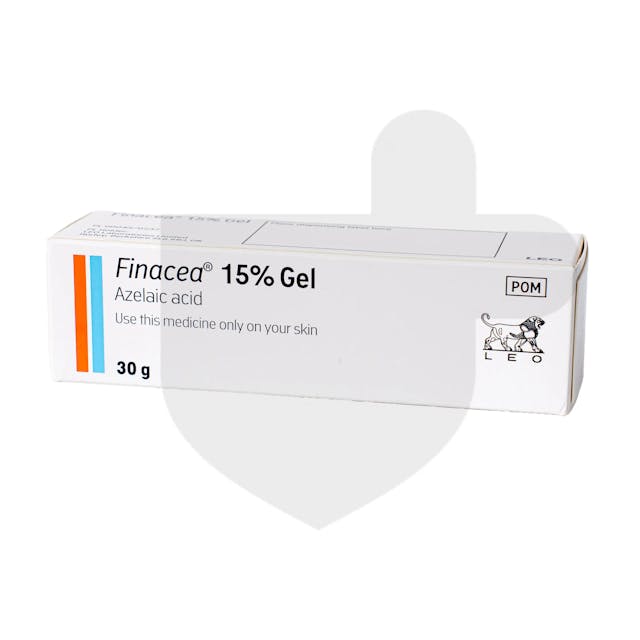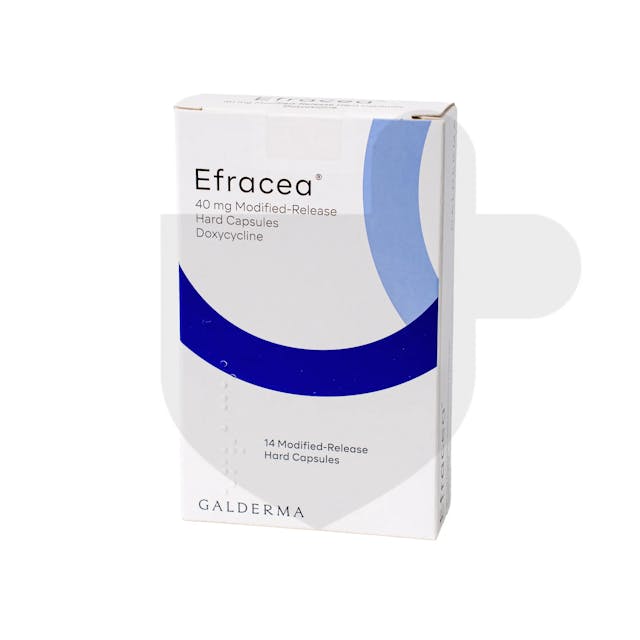Rosacea
Treatment & Medications
With NowPatient's private treatment plans you can treat Rosacea safely and easily in a few simple steps. Get started by selecting the available treatments you are interested in below or by hitting the start consultation button.
This content is intended for UK audiences only
Available treatments
Compare treatments
Get started with the right treatment for you
Treatments & Medications
delivery
service

Rosacea is a chronic inflammatory skin condition that affects millions of individuals worldwide. It primarily affects the face and is characterized by facial flushing, persistent redness, visible blood vessels, and the development of red bumps and pimples. In some cases, it can also lead to eye irritation, a swollen nose and in severe cases, skin thickening and swelling. While there is no cure for rosacea, various treatment options are available to manage the symptoms and improve the quality of life for those affected. In this comprehensive guide, we will explore the causes, symptoms, and treatment options for rosacea, as well as provide helpful tips for managing flare-ups, lifestyle tips and maintenance of overall skin health.
What is Rosacea?
Rosacea is a common skin condition that primarily affects the central face, including the cheeks, nose, chin, and forehead. It is characterized by episodes of flushing and redness, which can be accompanied by the development of small, pus-filled bumps. In some cases, the skin may thicken and enlarge, leading to a swollen nose. Additionally, many individuals with rosacea experience eye irritation and dryness, known as ocular rosacea.
What causes of Rosacea?
The exact cause of rosacea remains unknown, but several factors have been identified as potential contributors to its development. It is believed that a combination of genetic, environmental, and immune system factors play a role in its development. Some studies suggest that abnormalities in the blood vessels of the face, as well as reactions to microscopic mites that inhabit the skin, may contribute to the condition. Furthermore, certain triggers such as sun exposure, hot or cold weather, stress, and certain foods and drinks can exacerbate symptoms in individuals with rosacea.
- Genetic predisposition: Research suggests that genetics may play a role in the development of rosacea. Individuals with a family history of the condition may have an increased risk of developing it themselves
- Immune system dysfunction: An overactive immune system or abnormalities in the immune response may contribute to the inflammation seen in rosacea. This immune dysfunction can result in the dilation of blood vessels (telangiectasia) and the formation of redness and bumps
- Environmental triggers: Certain environmental factors can trigger or exacerbate rosacea symptoms. These triggers may include exposure to sunlight, very hot or cold temperatures, spicy foods, alcohol consumption, emotional stress, and specific skincare or haircare products
- Microscopic mites: The presence of microscopic mites called Demodex folliculorum on facial skin has been associated with rosacea. These mites are a natural part of the skin’s microbiome, but an overabundance of them may contribute to the development of the condition.
While the exact cause of rosacea may vary among individuals, it is likely a combination of genetic, immune, and environmental factors that contribute to its onset.
Who is at Risk for Rosacea?
Rosacea can affect individuals of any age, gender, or skin type. However, certain factors may increase an individual’s risk of developing the condition, including:
- Fair skin: People with fair skin are more susceptible to developing rosacea. The redness and flushing associated with the condition may be more visible on lighter skin tones
- Age: Rosacea typically begins to manifest after the age of 30, although it can occur at any age. Middle-aged and older adults are more prone to experiencing symptoms of rosacea
- Family history: Having a family member with rosacea can increase an individual’s likelihood of developing the condition. While the specific genetic factors involved in rosacea are still being studied, there appears to be a familial component to its occurrence
- Smoking history: Individuals with a history of smoking may have a higher risk of developing rosacea. Smoking can exacerbate inflammation and contribute to the dilation of blood vessels, potentially worsening the symptoms of rosacea
What are the Symptoms of Rosacea?
The primary symptoms of rosacea include facial redness (erythema) and flushing, visible blood vessels, swollen bumps, and a burning sensation. The symptoms of rosacea may look similar to those of sunburn. In some cases, eye irritation, dryness, and styes may also occur. It is important to note that rosacea can progress over time, with symptoms becoming more severe if left untreated. The symptoms of rosacea can vary from person to person, but they generally include:
- Facial redness and flushing: One of the primary signs of rosacea is facial redness and flushing. The face may appear pink or purple, and the redness can be persistent or come and go
- Visible blood vessels: Rosacea can cause small blood vessels on the nose and cheeks to become visible. These vessels may appear as thin, red lines on the skin
- Bumps and pimples: Many individuals with rosacea develop small bumps and pimples on their face, resembling acne. These bumps may contain pus and can also appear on the chest and back
- Burning sensation: A burning or stinging sensation may accompany the other symptoms of rosacea. The affected skin may feel hot and tender to the touch
- Eye irritation: Rosacea can also cause eye problems, leading to dryness, irritation, and swelling. This condition, known as ocular rosacea, may cause red or watery eyes, swollen eyelids (blepharitis), and the formation of styes. This damage can make the cornea vulnerable to ulceration and infection (keratitis), which could potentially threaten your sight
- Enlarged nose: In some cases, rosacea can cause the skin on the nose to thicken and enlarge. This condition, called rhinophyma, is more commonly observed in men and can result in a bulbous appearance of the nose
Diagnosing Rosacea
Diagnosing rosacea involves a thorough examination of the skin and a discussion of your symptoms and medical history. Be aware that rosacea can be misdiagnosed as dermatitis. A dermatologist or healthcare professional will assess the presence of diagnostic signs such as persistent redness and visible blood vessels. They may also inquire about symptoms, potential triggers, and family history. In some cases, additional tests or evaluations may be necessary to rule out other conditions with similar symptoms.
If you suspect you have rosacea, it is important to consult a dermatologist or qualified healthcare professional for a proper diagnosis and appropriate treatment. While there is no cure for rosacea, several treatment options are available to manage its symptoms and minimize flare-ups.
Treatment options for Rosacea
While there is no cure for rosacea, various treatment options are available to manage the symptoms and prevent flare-ups. The treatment plan will depend on the severity of the condition and the individual’s specific symptoms. It often involves a combination of self-help measures and medications.
Managing rosacea through self-help measures is an essential part of the treatment plan. These measures aim to reduce triggers and promote overall skin health. It is recommended to avoid excessive sun exposure, protect the skin with sunscreen and protective clothing, and maintain a gentle skincare routine using non-irritating products. Additionally, identifying and avoiding personal triggers such as spicy foods, hot drinks, and extreme temperatures can help prevent flare-ups.
Medications play a crucial role in managing the symptoms of rosacea. Topical creams and gels containing ingredients such as azelaic acid, ivermectin, metronidazole, or brimonidine can help reduce redness and inflammation.
Oral medications, such as antibiotics (tetracycline, doxycycline or erythromycin), both oral and topical may be prescribed to control inflammation and reduce the number of bumps and pimples associated with rosacea. Isotretinoin, a powerful acne medication, may be used in severe cases of rosacea.
In some instances, laser treatment or light therapies may be recommended to reduce visible blood vessels and redness, helping to reduce their appearance. Intense Pulsed Light (IPL) therapy and laser therapy are commonly used for rosacea treatment. Ocular rosacea management using eye drops or ointments may be prescribed to alleviate symptoms of ocular rosacea. Maintaining proper eye hygiene and avoiding potential irritants can also help manage eye-related symptoms.
It is important to note that treatment plans should be tailored to each individual’s specific needs and may require adjustments over time. Regular follow-up appointments with a healthcare professional can help monitor the progression of rosacea and ensure appropriate management.
Living with Rosacea
Living with rosacea can have a significant emotional impact on individuals. The visible symptoms of rosacea, such as facial redness, swelling and bumps, may lead to self-consciousness and can affect self-esteem and confidence. It is important for individuals with rosacea to seek emotional support and engage in self-care practices to maintain a positive mindset and cope with the challenges associated with the condition. There are however ways to cope with and manage the condition.
There are numerous resources available to support individuals with rosacea. Support groups, online communities, and patient advocacy organizations can provide valuable information, advice, and a sense of community. Additionally, dermatologists and healthcare professionals play a crucial role in providing guidance, treatment, and ongoing support for individuals living with rosacea.
- Education and support: Learning about rosacea and understanding its triggers and treatment options can empower individuals to take control of their condition. Participating in support groups or seeking guidance from healthcare professionals can provide valuable emotional support
- Proper skincare: Adopting a gentle skincare routine using non-irritating cleansers and moisturizers every morning and evening can help minimize flare-ups and maintain healthy skin. Use skin care products and soap-free cleansers with a neutral pH for sensitive skin. Avoiding scented soaps, alcohol-based skin cleansers, harsh chemicals and abrasive exfoliants is crucial for individuals with rosacea
- Sun protection: Protection from the sun’s harmful rays is essential for managing rosacea. Wearing sunscreen with a high SPF, seeking shade, and wearing protective clothing can help prevent flare-ups triggered by sun exposure
- Stress management: Stress is a common trigger for rosacea flare-ups. Engaging in stress-reducing activities like meditation, yoga, or hobbies can help manage stress levels and potentially reduce symptoms
- Awareness and acceptance: Understanding that rosacea is a chronic condition with no cure can aid in acceptance and emotional well-being. With proper treatment and lifestyle modifications, individuals with rosacea can lead fulfilling lives
Remember, everyone’s experience with rosacea is unique, and treatment plans may vary. It is important to consult with a healthcare professional for personalized advice and guidance.
Conclusion
Rosacea is a chronic skin condition that can significantly impact an individual’s quality of life. It is characterized by facial redness, visible blood vessels, bumps, and eye irritation. While the exact cause of rosacea remains unknown, factors such as genetics, immune system dysfunction, environmental triggers, and the presence of microscopic mites may contribute to its development.
Although there is no cure for rosacea, it can be effectively managed through a combination of lifestyle modifications and medical treatments. By understanding the causes, symptoms, seeking timely diagnosis, adopting self-help measures, following appropriate treatment plans, and seeking emotional support, individuals with rosacea can lead fulfilling lives while minimizing the impact of the condition on their overall well-being.
Additional Information: It is important to consult with a dermatologist or healthcare professional for an accurate diagnosis and personalized treatment plan for rosacea.
Sources
- NHS rosacea
- Betterhealth – Rosacea
- NHS Inform – Rosacea
- WebMD – Rosacea
- NIH – Rosacea
- Rosacea.org – Rosacea
- Cleveland Clinic – Rosacea
Medical Disclaimer
NowPatient has taken all reasonable steps to ensure that all material is factually accurate, complete, and current. However, the knowledge and experience of a qualified healthcare professional should always be sought after instead of using the information in this page. Before taking any drug, you should always speak to your doctor or another qualified healthcare provider.
The information provided here about medications is subject to change and is not meant to include all uses, precautions, warnings, directions, drug interactions, allergic reactions, or negative effects. The absence of warnings or other information for a particular medication does not imply that the medication or medication combination is appropriate for all patients or for all possible purposes.
What is NowPatient
Telehealth and Online Pharmacy
NowPatient is a licensed online pharmacy and doctor service that is available around the world. Our service is FREE and packed with valuable features that can benefit your health such as medication reminders, educational blogs, medically approved symptoms checker, UK NHS online pharmacy, private treatment plans, Rx Advantage card, health conditions information, affordable medications options, genetic testing, home test kits, health risks, pollen meter, air quality monitor, weight loss plans, drug savings programs and lots more!

WHY WE BUILT NOWPATIENT
To improve the lives of everyone by making high-quality care accessible and convenient
We are here to improve lives. Our service gives you access to smart features and resources that can help empower you to take control of your health and improve your health outcomes. All this, in one place, for FREE. We strive to bring a fresh perspective to managing health. NowPatient can be accessed by downloading the App or using your web browser.
Download our app today

Can I trust NowPatient
Meet our medical team
We are a passionate group of clinicians and medical writers covering a broad range of specialities with experience operating in health systems in the United Kingdom & United States. Providing excellent care and advice is at the heart of everything we do. You can read more about our medical team by visiting the medical team page or learn more about how we curate content by visiting our editorial process

